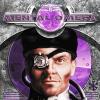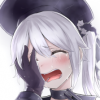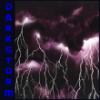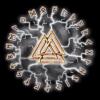
Pre-release Subfaction Design Ideas Thread
#321

Posted 06 November 2011 - 06:30 AM
Amaterasu Cannon
These siege unit uses its satellite uplink to communicate with Amaterasu Satellite to coordinate a strike of concentrated solar energy on the target with devastating consequences. The range is impressive, however the use of any armour would disrupt the communications array so is very vulnerable to any form of weaponry.
Available for: PF
Cost: 1400$
Preresquite: T3
Armament: Amaterasu Satellite Uplink, Laser Designator
Speed: 6
Armor: Light
HP: 200
Boom! I'm back, babies!
#322

Posted 06 November 2011 - 06:59 AM
Also, yes, we have artilleries for Epsilon in the works.
I don't believe it is heavy bombardment cannon style artillery though. If so, that's a little odd. It seems like a more Sovietish thing.
Tactical Missiles are a Soviet thing, Bombardment cannons are Alliedish.
I wouldn't say that. Bombardment isn't the Allies style at the moment, like Speeder said, they only have the Grand Cannon. Besides, it is easily more related to the Soviets since they use conventional approaches a lot more.
Grand Cannon AND the Battleship.
Actually Yngwie of Haus Malmsteen, feefty eenches of pure Svwedish beef.
#323

Posted 06 November 2011 - 07:12 AM
Bombardment cannon are soviet-ish.
Amaterasu Cannon
These siege unit uses its satellite uplink to communicate with Amaterasu Satellite to coordinate a strike of concentrated solar energy on the target with devastating consequences. The range is impressive, however the use of any armour would disrupt the communications array so is very vulnerable to any form of weaponry.
Available for: PF
Cost: 1400$
Preresquite: T3
Armament: Amaterasu Satellite Uplink, Laser Designator
Speed: 6
Armor: Light
HP: 200
AKA the Athena Cannon. *sigh* Do something more original like your Isotope Cannon.
Actually Yngwie of Haus Malmsteen, feefty eenches of pure Svwedish beef.
#324

Posted 06 November 2011 - 05:54 PM
Also, yes, we have artilleries for Epsilon in the works.
I don't believe it is heavy bombardment cannon style artillery though. If so, that's a little odd. It seems like a more Sovietish thing.
Tactical Missiles are a Soviet thing, Bombardment cannons are Alliedish.
I wouldn't say that. Bombardment isn't the Allies style at the moment, like Speeder said, they only have the Grand Cannon. Besides, it is easily more related to the Soviets since they use conventional approaches a lot more.
Grand Cannon AND the Battleship.
... With that argument, you could say that Allies have heavy armor because they have the Battle Fortress and Abrams Tank. My point is that heavy artillery goes with the Soviet's improvised weapons and heavy armor. An artillery barrage support power would be a good comparison. There isn't such a power in MO, but hypothetically speaking, would you give it to the Allies or the Soviet Union?
#325

Posted 14 November 2011 - 02:01 PM
Also, yes, we have artilleries for Epsilon in the works.
I don't believe it is heavy bombardment cannon style artillery though. If so, that's a little odd. It seems like a more Sovietish thing.
Tactical Missiles are a Soviet thing, Bombardment cannons are Alliedish.
I wouldn't say that. Bombardment isn't the Allies style at the moment, like Speeder said, they only have the Grand Cannon. Besides, it is easily more related to the Soviets since they use conventional approaches a lot more.
Grand Cannon AND the Battleship.
... With that argument, you could say that Allies have heavy armor because they have the Battle Fortress and Abrams Tank. My point is that heavy artillery goes with the Soviet's improvised weapons and heavy armor. An artillery barrage support power would be a good comparison. There isn't such a power in MO, but hypothetically speaking, would you give it to the Allies or the Soviet Union?
Allies, of course. Guess, our views of the sides are different.
Actually Yngwie of Haus Malmsteen, feefty eenches of pure Svwedish beef.
#326

Posted 14 November 2011 - 09:38 PM
Also, yes, we have artilleries for Epsilon in the works.
I don't believe it is heavy bombardment cannon style artillery though. If so, that's a little odd. It seems like a more Sovietish thing.
Tactical Missiles are a Soviet thing, Bombardment cannons are Alliedish.
I wouldn't say that. Bombardment isn't the Allies style at the moment, like Speeder said, they only have the Grand Cannon. Besides, it is easily more related to the Soviets since they use conventional approaches a lot more.
Grand Cannon AND the Battleship.
... With that argument, you could say that Allies have heavy armor because they have the Battle Fortress and Abrams Tank. My point is that heavy artillery goes with the Soviet's improvised weapons and heavy armor. An artillery barrage support power would be a good comparison. There isn't such a power in MO, but hypothetically speaking, would you give it to the Allies or the Soviet Union?
Allies, of course. Guess, our views of the sides are different.
Yeah, I guess we should just leave it to Speeder since this quote thing is getting too long.
#327

Posted 14 November 2011 - 10:19 PM
Also, yes, we have artilleries for Epsilon in the works.
I don't believe it is heavy bombardment cannon style artillery though. If so, that's a little odd. It seems like a more Sovietish thing.
Tactical Missiles are a Soviet thing, Bombardment cannons are Alliedish.
I wouldn't say that. Bombardment isn't the Allies style at the moment, like Speeder said, they only have the Grand Cannon. Besides, it is easily more related to the Soviets since they use conventional approaches a lot more.
Grand Cannon AND the Battleship.
... With that argument, you could say that Allies have heavy armor because they have the Battle Fortress and Abrams Tank. My point is that heavy artillery goes with the Soviet's improvised weapons and heavy armor. An artillery barrage support power would be a good comparison. There isn't such a power in MO, but hypothetically speaking, would you give it to the Allies or the Soviet Union?
Allies, of course. Guess, our views of the sides are different.
Yeah, I guess we should just leave it to Speeder since this quote thing is getting too long.
I LOVE PIRAMIDS OF QUOTES!
#329

Posted 15 November 2011 - 06:52 AM
C-C-C-C-COMBO BREAKER.
Yeah, right. that's a niiice way to end an argument. Anyway, here is my envision of how an Allied artillery barrage should be in MO.
Chrono Barrage
Prerequisite: Tech Center
Recharge Time: 8:00
Artillery barrages were rarely used in wars. Because they brought the artillery instead. A capability to bombard an installation without bringing the weapon itself was something Allies really lacked. Unlike the Soviet Scuds, Allied Prism Tanks were unable to fire at any ground level higher than itself, giving it a massive disadvantage against enemy defense placements higher than the Prism Tank. In order to take out those annoying installations, the Allies are employing a rather unusual way to deliver artillery shells. Somewhere in an unknown Allied base, bunch of Howitzers fire at a Chronosphere-esque device. The device chronoshifts all incoming artillery shells at a place designated by a commander. Which means if you target an area with this power, a rain of artillery shells will be chronoshifted there, bombarding the place to smithereens.
Actually Yngwie of Haus Malmsteen, feefty eenches of pure Svwedish beef.
#330

Posted 15 November 2011 - 08:44 AM
Can it be done? I di't know
Streamer of Rise of the Reds, Mental Omega and other mods

#331

Posted 15 November 2011 - 09:06 AM
Chrono Barrage
Prerequisite: Tech Center
Recharge Time: 8:00
Artillery barrages were rarely used in wars. Because they brought the artillery instead. A capability to bombard an installation without bringing the weapon itself was something Allies really lacked. Unlike the Soviet Scuds, Allied Prism Tanks were unable to fire at any ground level higher than itself, giving it a massive disadvantage against enemy defense placements higher than the Prism Tank. In order to take out those annoying installations, the Allies are employing a rather unusual way to deliver artillery shells. Somewhere in an unknown Allied base, bunch of Howitzers fire at a Chronosphere-esque device. The device chronoshifts all incoming artillery shells at a place designated by a commander. Which means if you target an area with this power, a rain of artillery shells will be chronoshifted there, bombarding the place to smithereens.
Seems you don't believe artillery are as suited to allies as you say, since you felt the need to shoehorn chrono tech in there.
Also, I'm with everyone else, bombardment canons match soviets more.
Not that your idea of a chrono-based weapon attack is a bad one.
#332

Posted 15 November 2011 - 09:20 AM
I must say it's a very interesting concept.
Can it be done? I di't know
I think about a Lightning Storm clone, which could emulate this. In Ares, I'm sure this could be done.
Hell, I might go and do this, this sounds too great to NOT do it.
- Jargalhurts likes this




AS Discord server: https://discord.gg/7aM7Hm2
ComradeCrimson: AS is the product of Hungarian acid
ComradeCrimson: And magical hussars
Dutchygamer: and Weird Al.
#333

Posted 17 November 2011 - 03:04 PM
I must say it's a very interesting concept.
Can it be done? I di't know
I think about a Lightning Storm clone, which could emulate this. In Ares, I'm sure this could be done.
Hell, I might go and do this, this sounds too great to NOT do it.
Did you managed to pull that off?
Actually Yngwie of Haus Malmsteen, feefty eenches of pure Svwedish beef.
#334

Posted 23 November 2011 - 10:12 AM
Pyro Exo-Suit(Basically is a land version of Pyro Rocketeer)
China specialize on napalm and flame weaponry, they managed to start the Pyro Exo-Suit program. Pyro Exo-Suit are soldiers armed with powerful napalm projectile cannons capable of melting through armor and burning infantry into ash, the suit also offers protection from hazards like radiation and poisonous substances.
Available for: China
Cost: 900
Preresquite:T3
Armament: Portable Napalm Cannon
Armor: Plate
Speed: 5
HP: 300
Note: Immune to poison and radiation, cannot be attack by dog.
Boom! I'm back, babies!
#335

Posted 05 December 2011 - 12:47 AM
The Pacific Front:
Other Names:
"The Front"
"The Pacific Guard"
Primary Member States:
The Free State of Japan
The Republic of South Korea
The Commonwealth of Australia and New Zealand
Base Of Operations:
"Southern Cross" Naval Base, Tasmania.
Leaders (Respective):
Prime Minister Takashi Yamizaki
President Gun-Woo Jeong
Prime Minister David Cathrall
History:
The Pacific Front, was an alliance formed towards the end of the Third Great War when it became apparent that Europe and the United States, were being overrun by forces of the Soviet Union. The Soviet-Allied alliance was short lived once Yuri was supposedly killed and within weeks, Soviet forces began occupying much of Europe and North America. Desperate, the isolated Pacific nations turned to one another for mutual support in the face of Soviet occupation and the Pacific Front was born. South Korea was the first to feel the jackboot of Soviet aggression, as Soviet backed North Korean forces poured over the border into the crumbling Republic. Within a few weeks, South Korea fell and it's leaders and what remained of it's navy and air-force fled for their lives across the straits to Japan.
The eyes of the Reds then turned to The Free State of Japan and the Soviet Pacific Fleet engaged the combined forces of the Japanese home defense fleet and remains of the Korean Navy off of the Northern Coast of Hokkaido. Amazingly, the Allied Fleet was able to hold it's own against the massive Soviet armada, as glory seeking Soviet Admirals failed to communicate effectively with one another. Angered by the defiance of the Japanese, Premiere Romanov ordered a massive aerial bombing campaign against the tiny island nation but this time, reinforcements had arrived from the Australian/New Zealand Commonwealth. The British Pacific Navy that had been stationed in Singapore during the fall had escaped to Australia and was formally ceded to the newly formed Australian/ New Zealand government. Realizing now, that they faced a bitterly determined opponent, the Soviet Union offered an armistice to the Pacific Front. In exchange for allowing South Korea, Japan and the Australia/New Zealand Commonwealth peace, the Pacific Front would limit it's combined military and allow for Soviet "Advisers" to be placed in their respective governments.
The members begrudgingly agreed and Soviet armies pulled out of South Korea and the Soviet Navy stood down in the Sea of Japan. The Pacific Front however, secretly continued to expand their military programs, despite the constant presence of the Soviet Advisers. Contact was covertly established with Einstein and other Allied underground movements across the globe and the Pacific Front, became a refuge for those wishing to flee extreme Soviet Occupation. When the Fourth Great war against the Epsilon Empire eventually broke out, the Pacific Front was an Alliance which was able to fight from a position of relative strength.
It's only short but what do you think?
Edited by Death Cultist, 05 December 2011 - 12:48 AM.
#336

Posted 05 December 2011 - 08:23 AM








IRC: #menthosogma (Rizon)
#337

Posted 05 December 2011 - 09:38 AM
Edited by Death Cultist, 05 December 2011 - 09:38 AM.
#338

Posted 05 December 2011 - 10:27 AM








IRC: #menthosogma (Rizon)
#339

Posted 05 December 2011 - 09:42 PM
#340

Posted 07 December 2011 - 03:09 AM
The Constitutional Republic Of Japan:
Leadership: Prime Minister Takashi Yamizaki
Head Of State: Emperor Showa Hirohito
Allegiance: The Allied Nations/ Pacific Front
Post Great War History
During the First Great War, Japan fought with the Entente against the Central Powers, Japanese naval units assisting in protecting British shipping against German U-Boat attacks. Despite this assistance during the war, Anglo/Japanese relations deteriorated due to cultural differences and officially ended in 1923. From here, Japan went on to forge it's own destiny, expanding into China and the Pacific. Europe cared little for the expansion Japanese in China, favoring Japanese control of China as opposed to that of the Soviet Union, who also sought to spread it's influence over it's southern neighbor. The Chinese were effectively helpless and quickly fell, the province of Manchuria, Korea and much of Eastern China being incorporated into the Empire of Japan. Chinese delegates demanded the immediate withdrawal of Japanese forces from mainland China, and the United States, who was alarmed at the rate of Japanese expansion in the Far East and the Pacific responded. Tensions between the two super powers began to rise, and the world feared the start of a new major conflict.
The War That Wasn't:
In 1940, the United States ordered sanctions against the Empire and began cutting off trade and oil in the Pacific. A radical group from within the Empire responded aggressively and Japanese saboteurs infiltrated the United States Naval base of Pearl Harbor and stowed aboard the flagship USS Arizona. They placed explosives across the ship and detonated them in the early morning on September 6th. The ship sank almost immediately, water pouring into the breaches dragging the ship and 900 of it's 1400 crew members to the bottom of the harbor. This was a blatant act of aggression that could not be ignored and the United States prepared for war. The Japanese government was suddenly faced with a crisis, denied all knowledge of the attack and a witch-hunt for those responsible began immediately. The United States demanded that they be let in on the investigation and the Japanese were forced to comply. It did not take long to discover the culprit of the attack, a young radical known as Tatsu Yoshiro, a western-educated warlord who fueled the ideology of "The Divine Destiny", and believed in the subjugation of all non-Japanese races.
The Hunt For Tatsu:
Tatsu was traced to a base in Manchuria, where the local Imperial garrisons had been overrun by rebel forces under Tatsu. Angered and driven by a public demand for blood, the United States demanded that they be involved in the assault against Tatsu's Rebels in China. The Japanese were again forced to comply, and in 1942, American fighters launched from carriers, supported Japanese ground forces against Tatsu's Rebel's. The war dragged on for only a few brief weeks and ended when American bombers, flattened Tatsu's compound. The Japanese army recovered Tatsu's body and handed it over to the Americans as proof of he death. Thus, war was avoided but the issue of Japanese expansion in China still needed to be addressed. The United States was able to negotiate from a position of relative strength and demanded the independence of Korea and China. The Japanese protested, but the reinvigorated France, The Wiemar Republic and Great Britain extended a hand of friendship to Japan opening the long closed off European markets to the Empire. Japan in exchange, allowed for the transfer of power to major factions in China and Korea and secretly, signed an alliance with the European Powers against the ever growing USSR.
The Second Great War
The Second Great War began in the East 1946, when the Soviet Union invaded Northern China. The European Powers for many years had been following a policy of appeasement with the USSR and quickly realized that the Soviet Union intended to invade and occupy all of Europe and Asia. Soviet forces rolled over the scattered Chinese forces and were soon bearing down on Korea. The European Allies called on Japan to help defend Korea and only four years after leaving, the Empire returned not as conquerors but as saviors. Initially military relations were sour and generals from both armies refused to communicate. It was not until Soviet Tanks began pouring over the Yalu and Tumen rivers were differences put aside. Stoic Imperial Japanese forces fought alongside grim Korean militias but were slowly driven South to Seoul. The Allied forces dug in however, and the USSR were unable to break the desperate defenders ,the Soviet supply lines stretched to capacity.
The Japanese Imperial Navy meanwhile began to frequently skirmish with the Soviet Eastern Fleet and suffered heavy losses. The Soviets were however, unable to gain control of the Sea of Japan, which allowed for the continued flow of reinforcements to Korea and the Red advance soon stalled. The Japanese/Korean forces were soon able to turn the tide outside of Seoul and began a devastating counter-attack against the Soviets, pushing them all the way back up to the 38th parallel. It was here that the Allies were finally stopped, and for the rest of the war the 38th parallel became the front-line. The Soviet during this time, installed a puppet government in Northern Korea and began a program of experimental psychic indoctrination, the likes of which had never been seen before. When the Soviet Union was finally defeated in 1953, Japanese/Korean forces moved into liberate North Korea, but were faced with an extremely hostile nation who were fanatically loyal to Communism.
Despite the victory, the Japanese Empire's back had been broken, the war had taken a heavy toll on the Japanese people and a slow process of rebuilding had to begin. Soviet fire-bombing campaigns against Hiroshima, Ngasaki, Tokyo and Kyoto had left the cities in ruins. The battered nations of Europe offered help to their Eastern Allies who had so valiantly held the line against the Soviets and within the decade, Japan was back on it's feet. The Emperor however declared that the Japanese Empire would never rise again, and was officially disbanded in 1966, in favor the Constitutional Republic of Japan.
The Third Great War
When the Soviets began their invasion of the United States in 1972, the Japanese Republic, like Europe was unable to respond due to the sudden appearance of Nuclear silos in Vladivostok pointed at major Japanese cities. Japan was helpless to watch as North Korea invaded it's Southern counterpart and Soviet troops once again marched into China and South East Asia. When the US city of Chicago was destroyed by a soviet Nuclear Missile, Japan responded by launching a surprise Naval attack against Vladivostok and Japanese cruisers were able to break the Soviet Armada stationed near the city. Japanese warships soon brought the Soviet missile silos in range and destroyed them in an operation that revealed the silos were in fact fake. Intel captured revealed that there were actually no Soviet Missiles present in Asia and that this was but a simple ruse to keep the Japanese Republic out of the war. Spurred on by this the Japanese army began a reinvigorated attack against the Soviets and rushed to the aid of their beleaguered South Korean Allies.
The Soviet forces were once again unable to defeat the combined Japanese/South Korean forces and were driven back over the 38th Parallel. With Korea secure, the Korean Navy and Japanese Navy began to assist in clearing the Soviet submarine fleet out of the Pacific. When the war finally came to an end, past grievances between the South Koreans and Japan had disappeared, a bond forged in war against a common foe replacing any old grudges. After the war, Japan applied for official membership in the Allied Nations which was accepted only days before the Yuri Crisis began. This move would later pave the way for Japanese participation in the Pacific Front as a more involved member of the Allies.
My version of Japan in the Red Alert Universe.
Edited by Death Cultist, 08 December 2011 - 10:11 AM.
- Jargalhurts likes this
0 user(s) are reading this topic
0 members, 0 guests, 0 anonymous users



 This topic is locked
This topic is locked



















